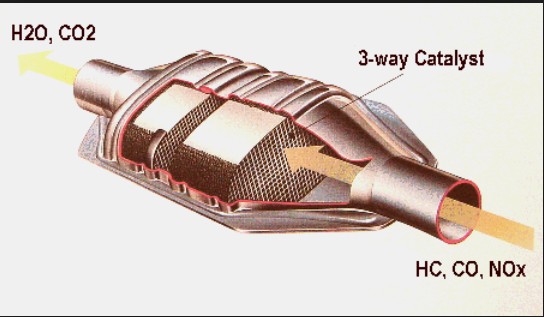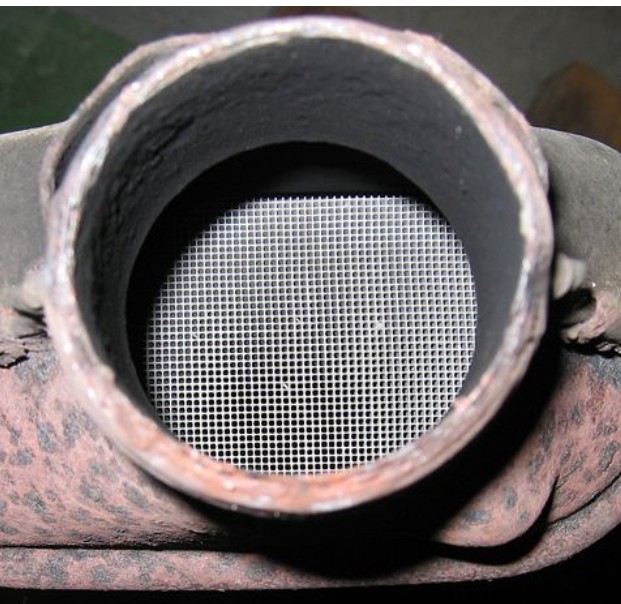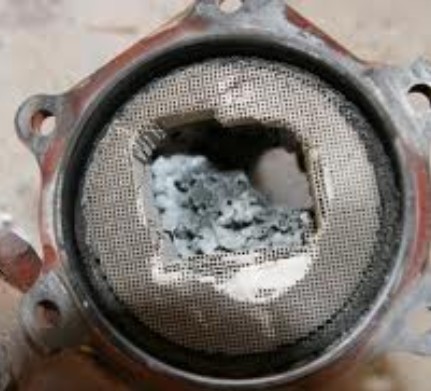P0420 Catalyst System Efficiency Below Threshold (Bank 1), P0430 – Catalyst System Efficiency Below Threshold (Bank 2)
When you get a check engine light and come up with a P0420 or P0430 code, your first assumption may be that you need a new catalytic converter. That may be true, but there are tests you should do first. And, you should understand how the system works.
Here’s a quick overview.
The powertrain control module (PCM) takes inputs from the engine coolant temp sensor (ECT), the mass airflow sensor (MAF), and the throttle position sensor (TPS) and calculates how much fuel to add to the incoming air to get a complete burn. Then it checks on inputs from the upstream oxygen sensors (O2) to see how it did with its calculations. Since you’re moving, going up and down hills, accelerating and decelerating, the computer is CONSTANTLY recalculating and the upstream O2 sensor is CONSTANTLY changing—switching back and forth between rich exhaust and lean exhaust. So you have to understand that the PCM is constantly playing “catch-up” to recalculate. That’s just how the system works. If the PCM overshoots and provides too much fuel, that extra fuel gets burned off in the catalytic converter. In other words, the Cat Converter takes care of all the miscalculations. So the downstream O2 sensor, located AFTER the cat converter, should rarely switch between rich and lean. Even if it does, the sweep should be fairly mild.
However, if the downstream O2 sensor starts sweeping between rich and lean, that’s an indication to the PCM that the cat converter isn’t doing its job of cleaning up the PCM’s mistakes.
What goes wrong with a cat converter
You also have to understand how a cat converter works.
![P0420, P0430, catalytic converter]()
Cut-away of a typical catalytic converter
There’s a ceramic honeycomb inside and the surfaces contain a coating of precious metals
![P0420, P0430, catalytic converter, check engine light flashing]()
Cat Converter showing honeycomb in good condition
like platinum, Palladium, Rhodium, and other non-precious metals. Those compounds react with unburned fuel in an oxidation/heating process that completes the burn and neutralizes oxides of nitrogen (a component of smog). It’s similar in concept to a municipal garbage burner where they add treat the smoke with extra heat to reduce emissions.
However, if too much unburned fuel enters the cat converter, the oxidation process creates too much heat and the converter starts a runaway reaction. If that continues, it causes a meltdown
![P0420, P0430, flashing check engine light]()
Melted ceramic honeycomb. This is a destroyed converter caused by ignoring engine problems.
where the ceramic honeycomb actually self destructs. Once that happens, the cat converter is toast. The point here is that cat converters don’t die on their own, they’re always murdered. Excess fuel, bad valve stem seals that leak oil into the combustion chamber, coolant leaks that send coolant into the exhaust stream—all of those engine problems can kill a cat converter. If you replace a converter without fixing the underlying problem, you’ll just have to replace it again.
So where to start?
Always start by connecting a scan tool that’s capable of displaying live data. And don’t whine to me that you don’t have one of those. Scan tools have dropped in price and you can get one with live data for less than $100. Click here to buy one. Here’s the lecture: If you want to work on your own car, you must have the right tools. In the old days you had to own a tach/dwell meter and a timing light. So shut up and stop complaining about how you have to buy a scan tool. Either invest in the right tools or take it to the shop and pay them $100 to do a scan.
Now, connect the scan tool, start the engine and let it run until the tool shows that it’s in CLOSED LOOP. That means it’s no longer running off factory programming and is taking information from all the sensors and making its own calculations. Then, have a friend drive the vehicle while you monitor FUEL TRIM readings. Depending on your vehicle, you may be able to monitor both short and long-term fuel trim. Fuel trim is the amount of EXTRA fuel the PCM has to add to keep the engine running properly. In an ideal world with a brand new engine, the short term fuel trim should be 0. But in an older vehicle, a short-term fuel trim reading of 10% is acceptable. The maximum short term fuel trim is 25%. When the PCM exceeds that, it starts boosting long-term fuel trim, so check both. In other words, a low short term fuel trim with a higher long term fuel trim means you have an air/fuel problem.
What causes excessive fuel trim?
The number one villain is a vacuum leak after the MAF sensor has measured how much air is coming into the engine. That causes the upstream O2 sensor to see a continually lean exhaust and it adds fuel to compensate. Plugged fuel injectors, a bad fuel pressure regulator, and a bad fuel pump can also cause a lean condition.
If the fuel trims are in the normal range, next check the upstream O2 sensors. A healthy O2 sensor should switch between rich and lean at least 8-10 times in 10 seconds. Many times a scan tool won’t react that quickly and that may mislead you. So check the scan tool to see if it displays CROSS COUNTS. That metric actually does the counting for you. Professionals use a scope to check for cross counts. If you find that the upstream O2 sensor ISN”T switching that often, you have a “lazy” sensor. That causes the PCM to react too slowly, forcing the cat converter to see too much fuel, then nothing. That causes the downstream sensor to switch between rich and lean and cause a P0420 or P0430 code. Bottom line: if the upstream sensors are lazy, they’ll cause the downstream sensors to switch and make you think the cat converter is bad. Ignore the problem and the cat converter WILL go bad from all the extra fuel. So replace the lazy upstream sensors, clear the codes, and complete another drive cycle. Click here to understand drive cycles.
CLUE: If the upstream O2 and downstream O2 are both switching rapidly, the cat converter isn’t doing its job. A properly operating system should show rapidly switching upstream sensor and a downstream sensor that rarely switches.
If the fuel trims are ok, and you’ve replaced the O2 sensors, confirmed that the fuel pressure is correct, that you have no excessive blow-by, worn valve stem seals, or coolant leaks, you may have to replace the cat converter. Don’t buy a cheap one. It’ll set off the check engine light.
Got a car question? Click here and send it to me. I’ll do my best to get you an answer.
For more information on this repair or any others for your vehicle, buy an online subscription to either Alldatadiy.com or eautorepair.net. Click on this link to compare the two services: Compare Alldata and Eautorepair.
If you just need information for a single repair and want to save money,eautorepair offers a lower price 1-week subscription for only $11.99. Or, if you’ll be working on this vehicle in the future, you can buy a 1-year subscription (Alldatadiy.com for $26.99, or eautorepair.net $29.99)
© 2012 Rick Muscoplat
![Alldata, shop manual, wiring diagrams, tsbs Alldatadiy.com]()
Alldatadiy.com
![online manual, shop manual, repair information eautorepair.net]()
eautorepair.net
Alldata and Eautorepair are both professional grade shop manuals. You’ll find more in-depth information and more complete wiring diagrams, along with descriptions of how the systems work. And, you’ll get all that at a price you can afford. Check them out!
Click HERE to read AUTO REPAIR ARTICLES sorted by topic
Click HERE to read some cool DIAGNOSTIC TIPS
Click HERE to read ACURA articles
Click HERE to read AUDI articles
Click HERE to read BMW articles
Click HERE to read CHRYSLER articles
Click HERE to read DODGE articles
Click HERE to read FORD LINCOLN MERCURY articles
Click HERE to read GM articles
Click HERE to read HONDA articles
Click HERE to read HYUNDAI articles
Click HERE to read INFINITI articles
Click HERE to read JEEP articles
Click HERE to read KIA articles
Click HERE to read MITSUBISHI articles
Click HERE to read NISSAN articles
Click HERE to read SUBURU articles
Click HERE to read TOYOTA articles
Click HERE to read VOLKSWAGEN articles
![]()






